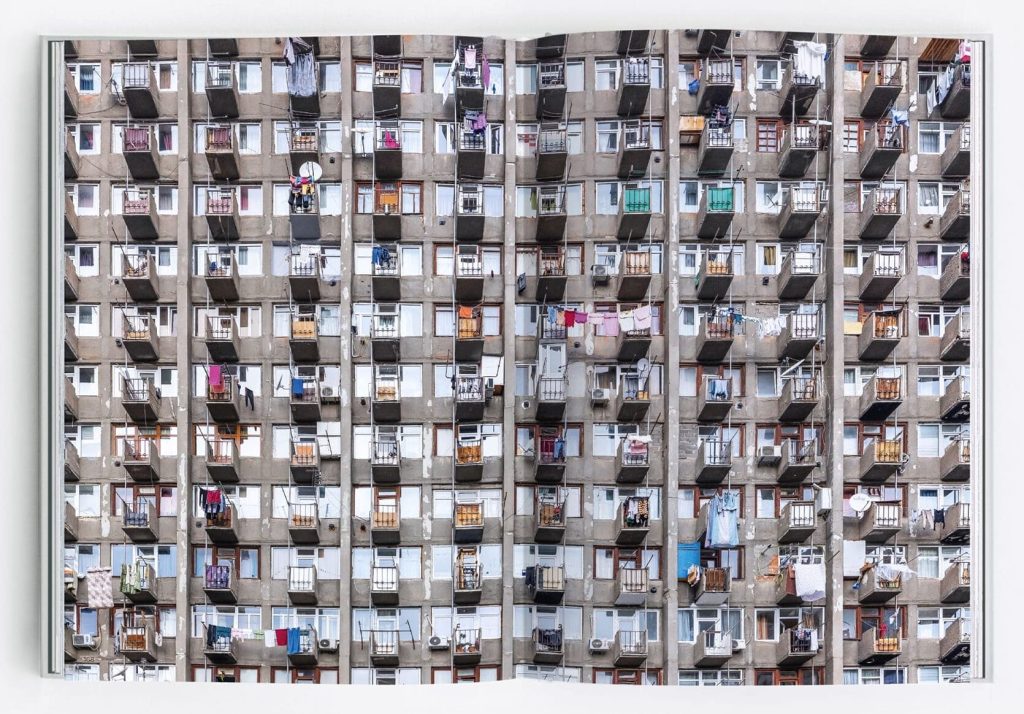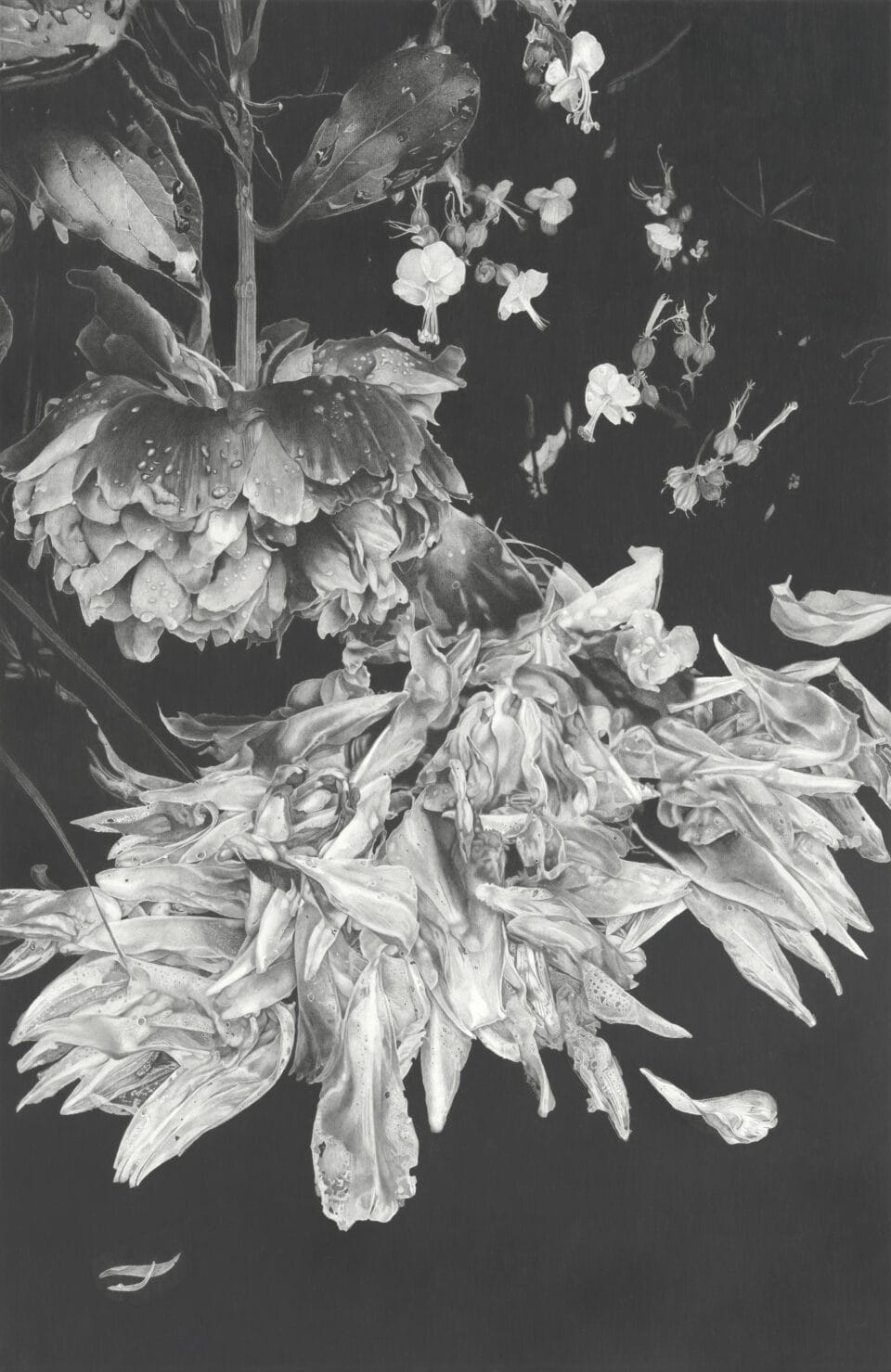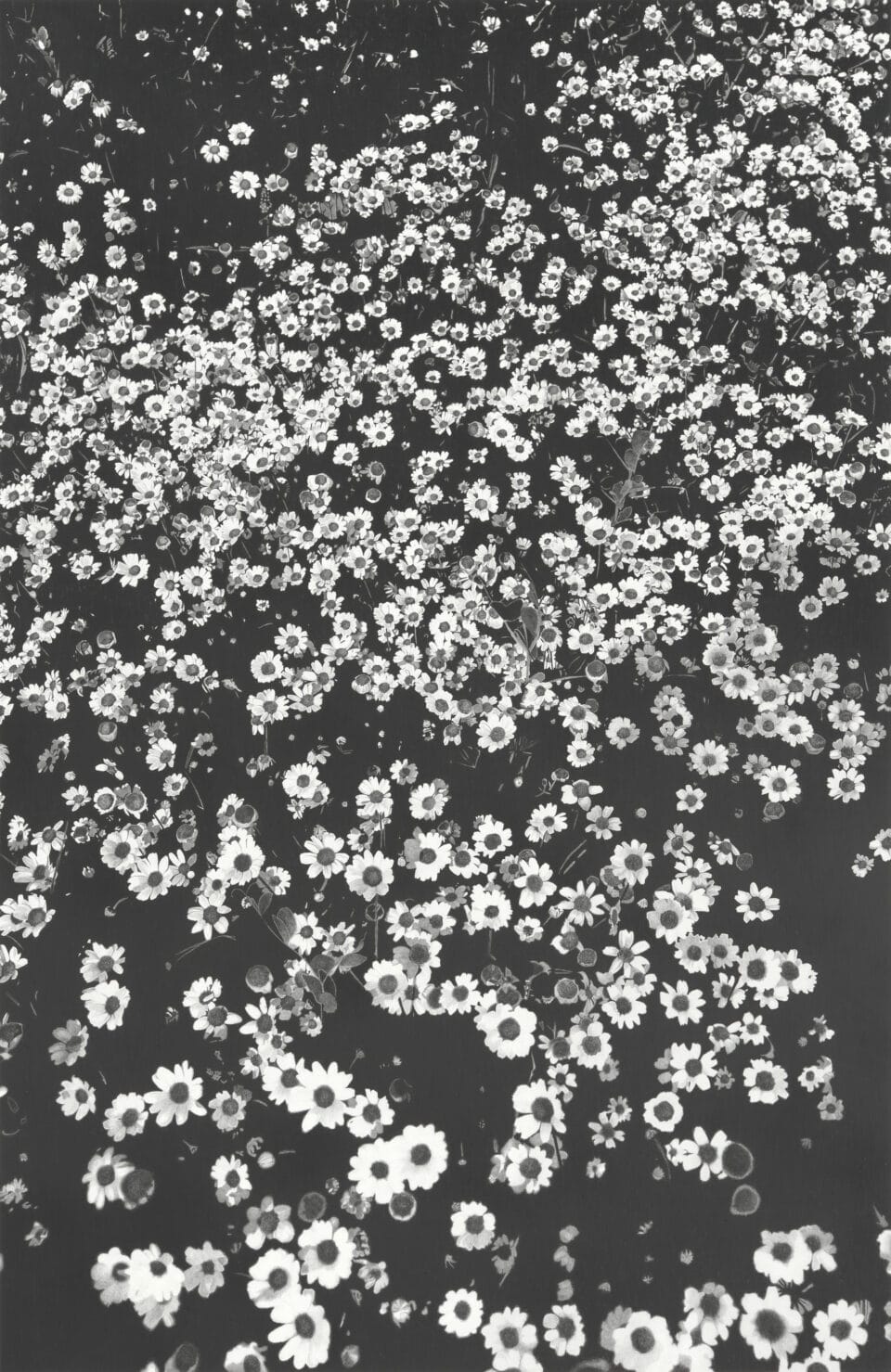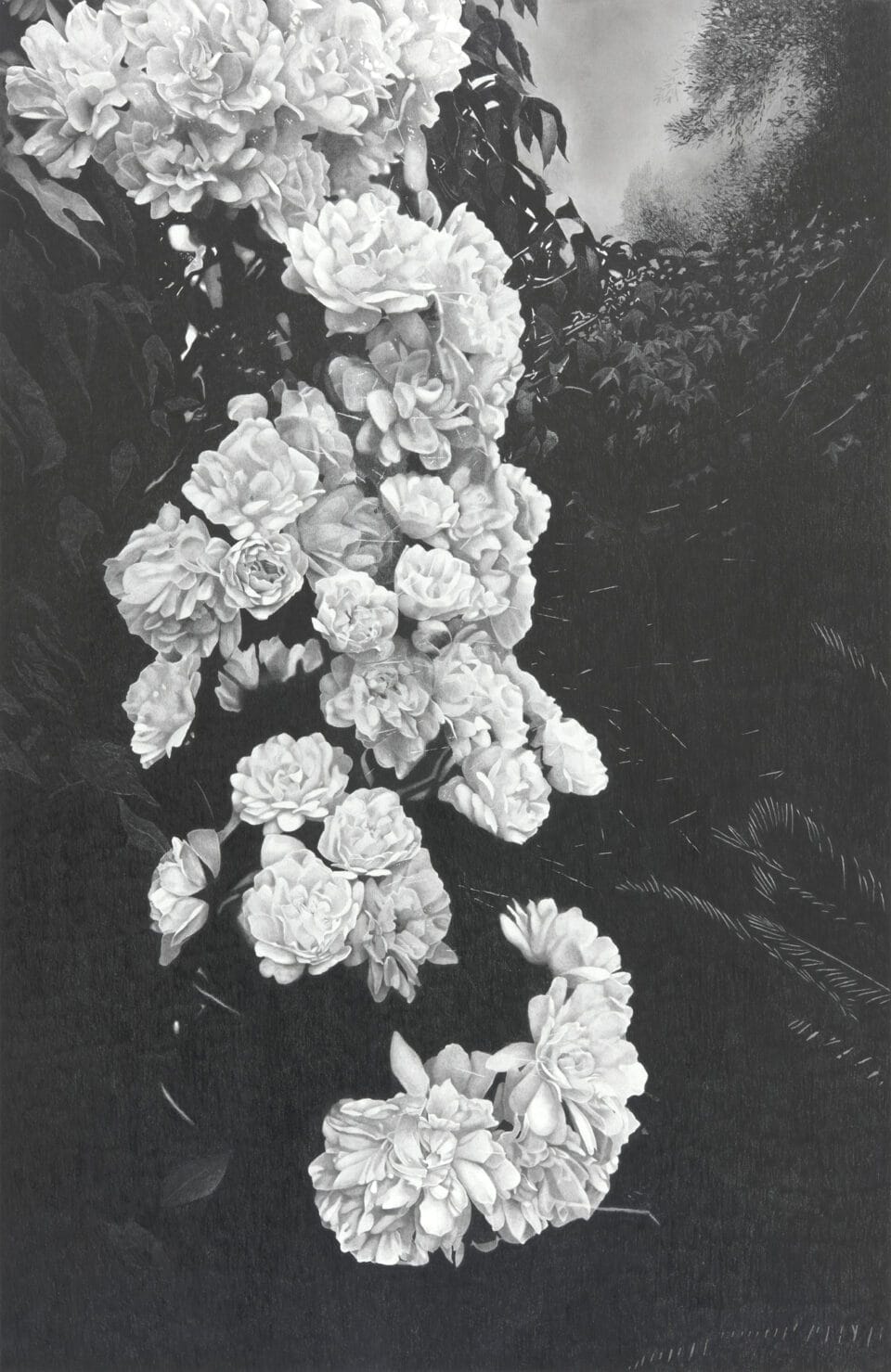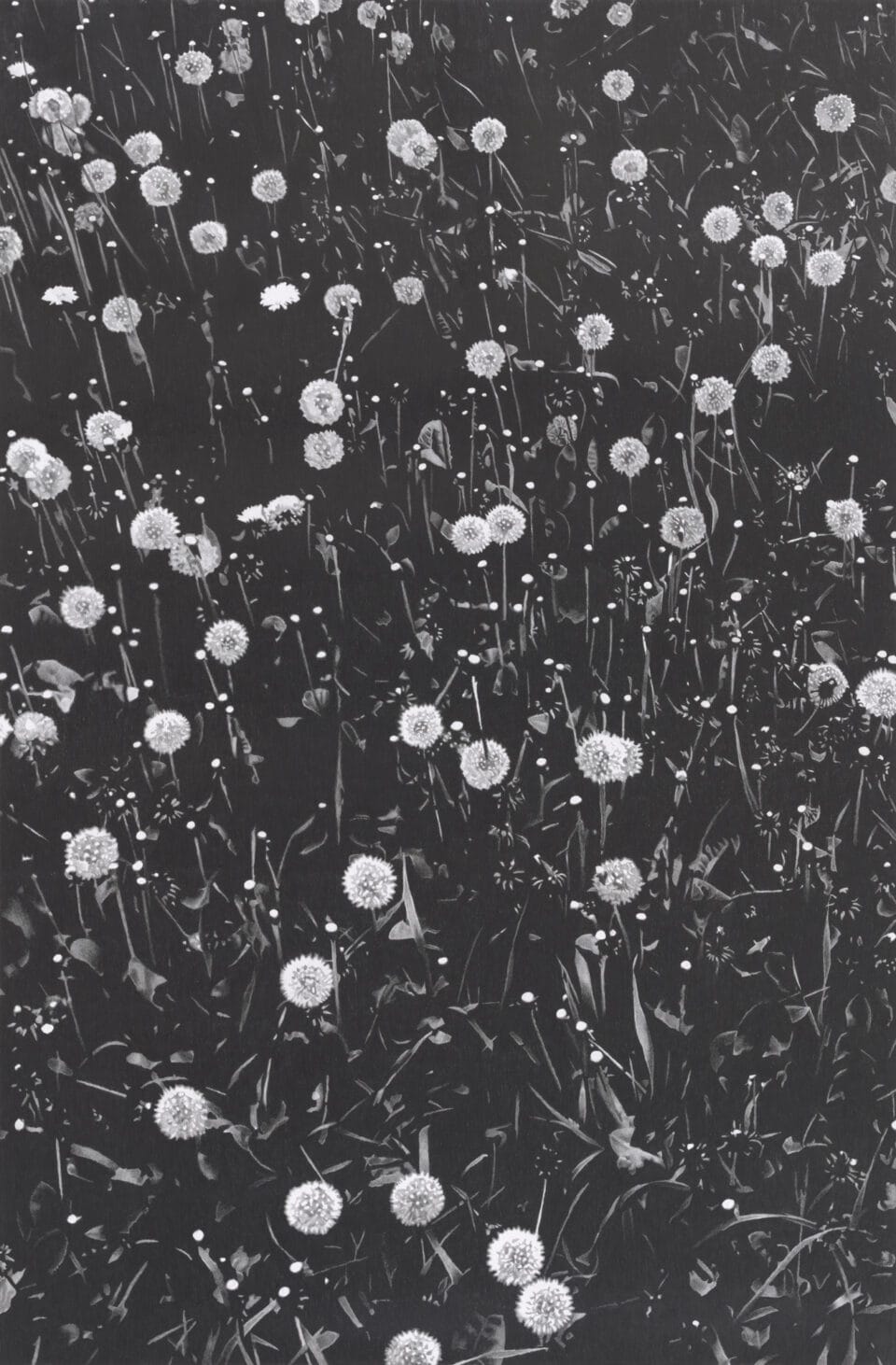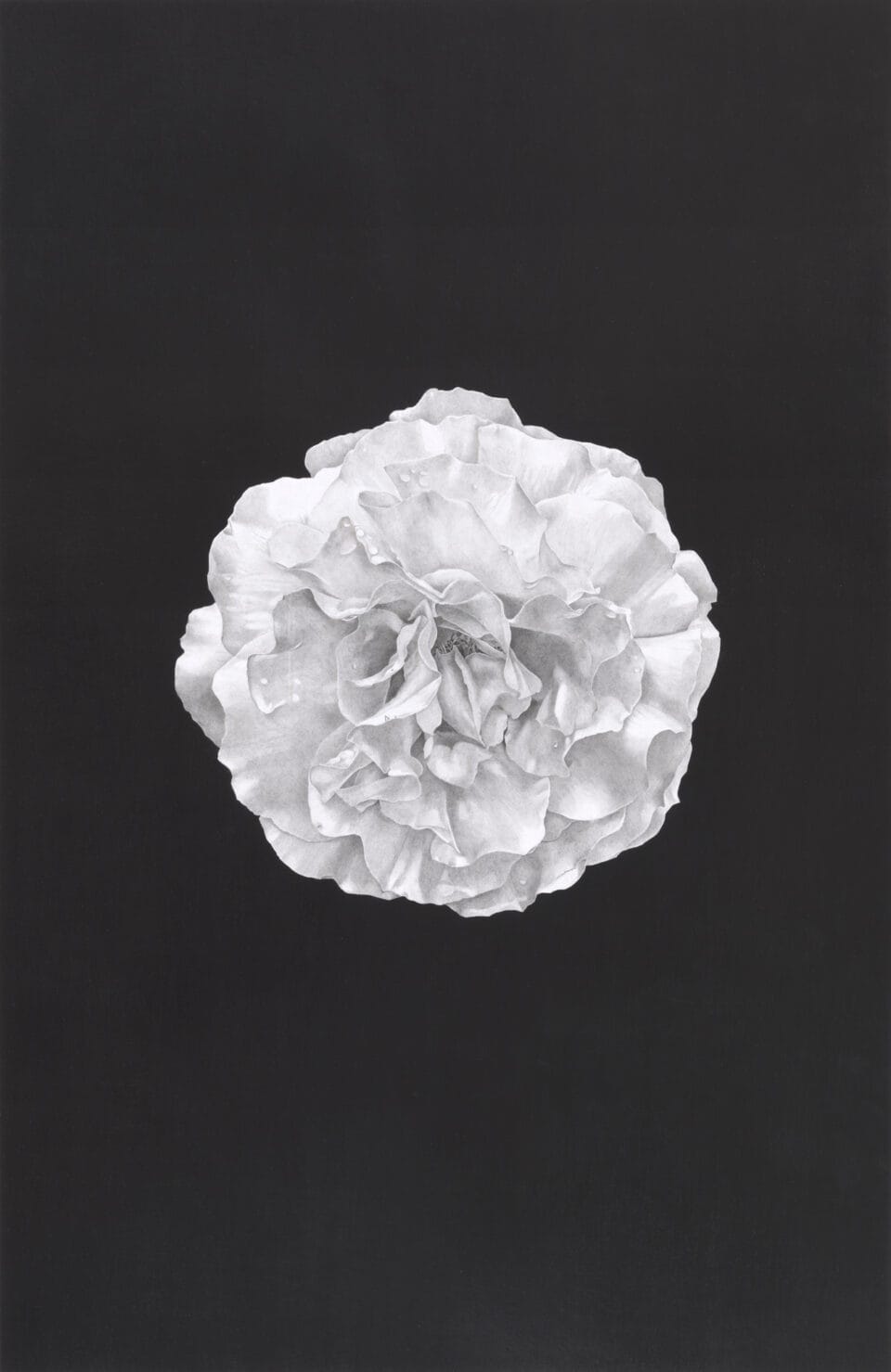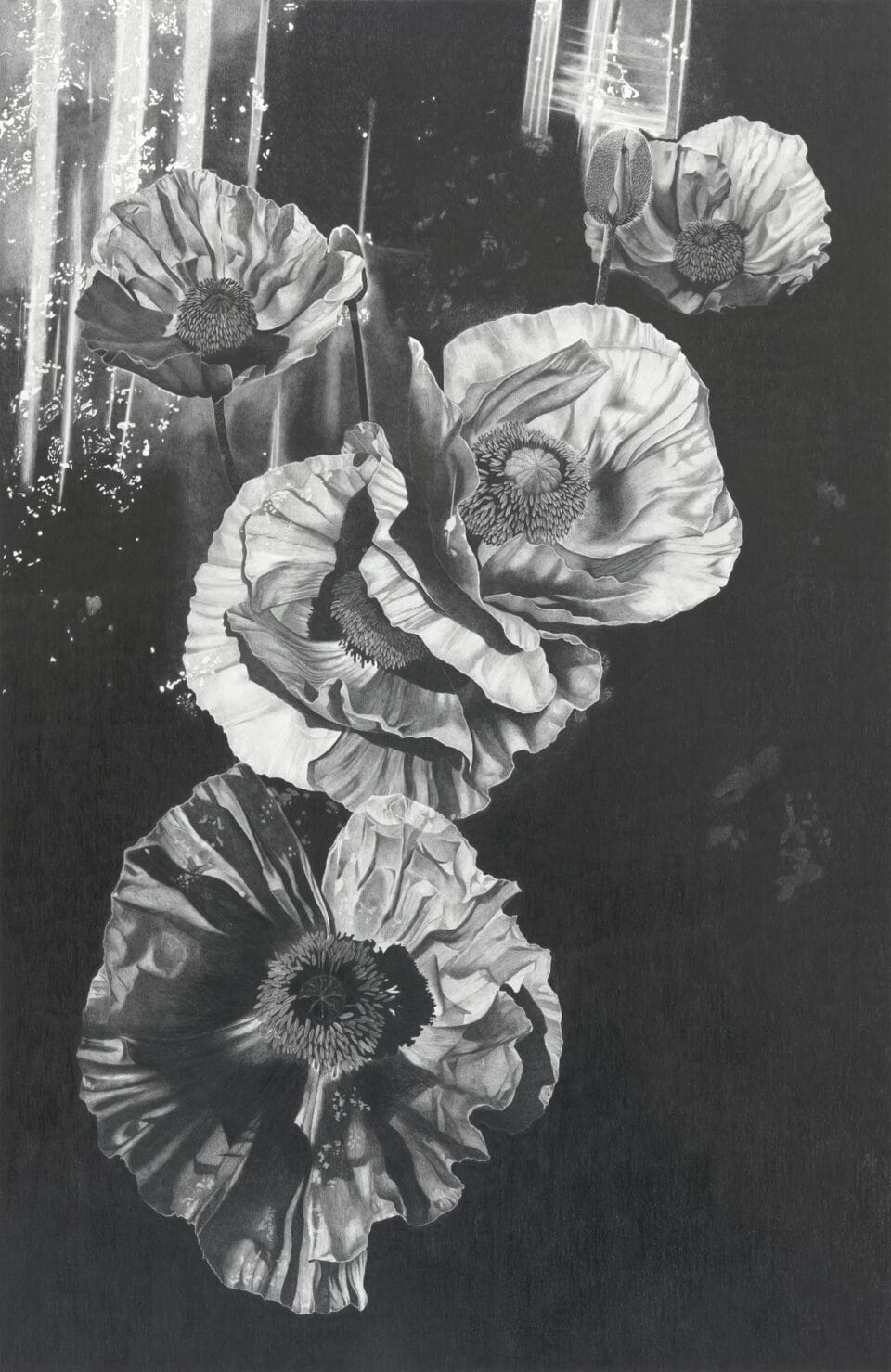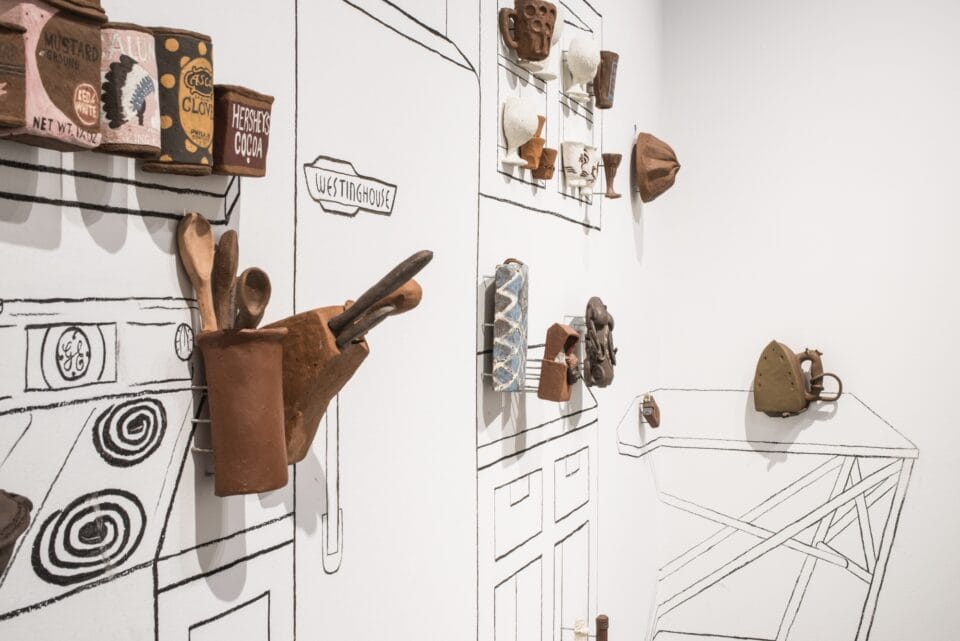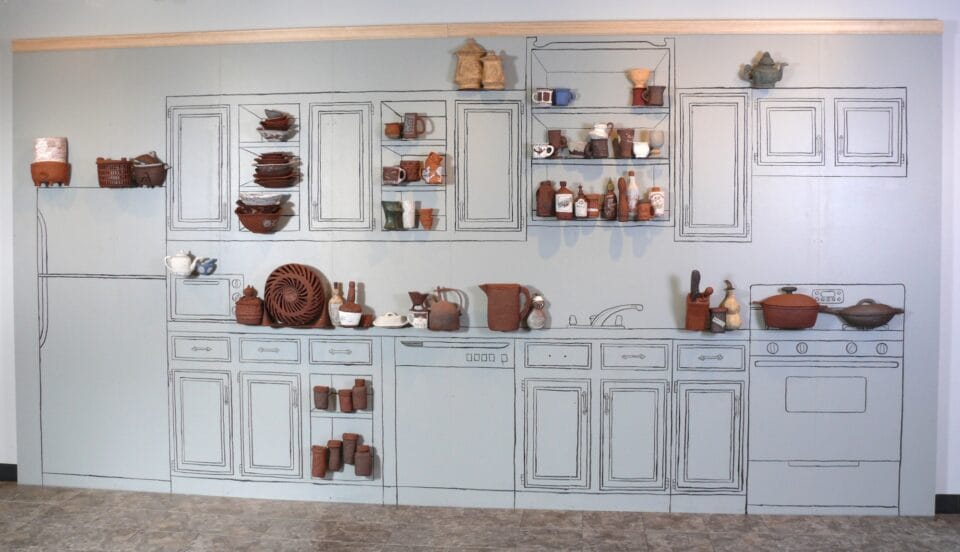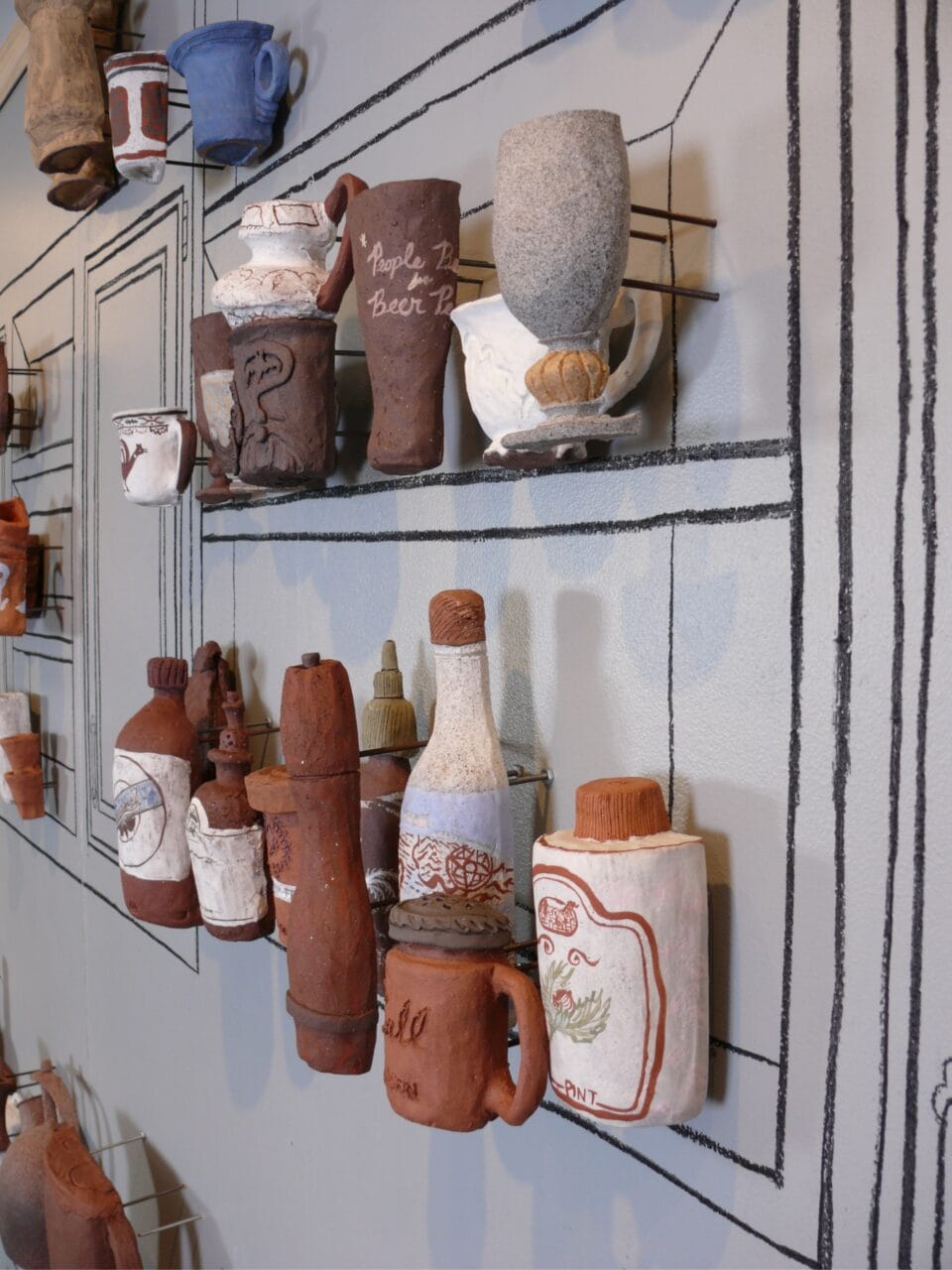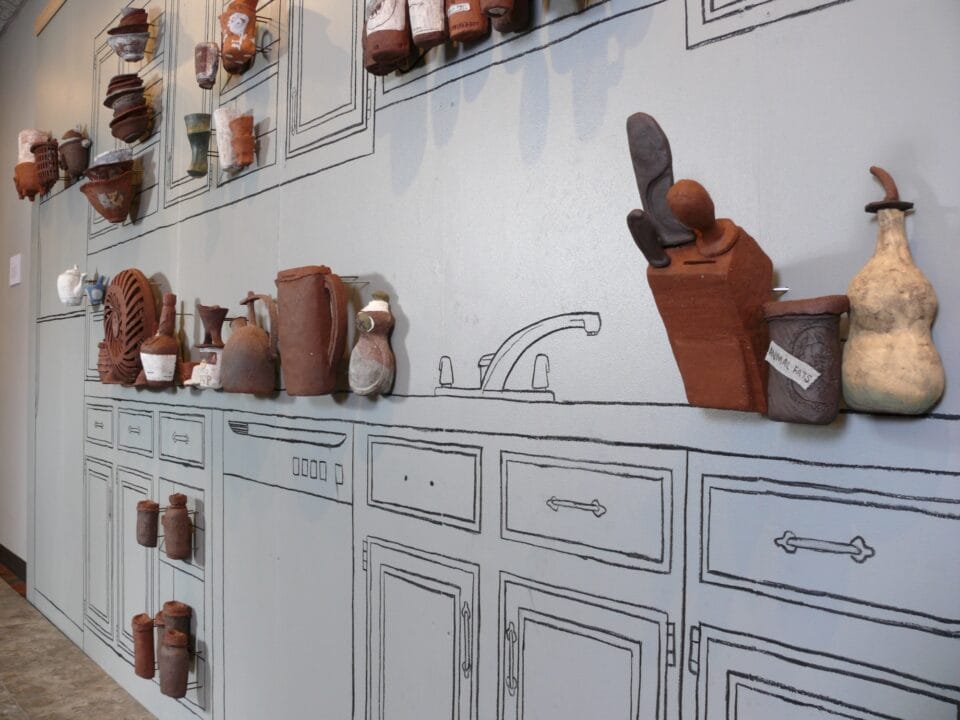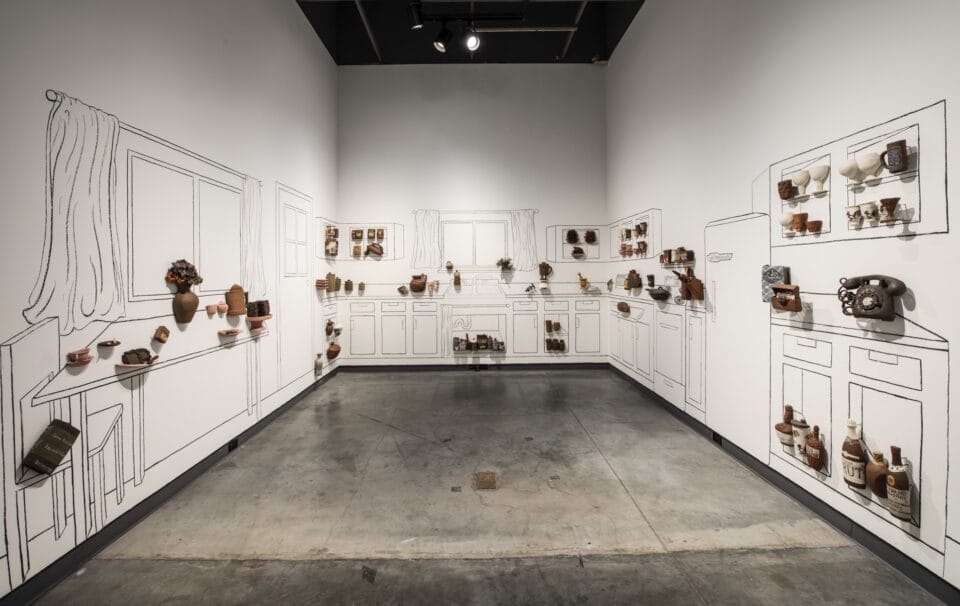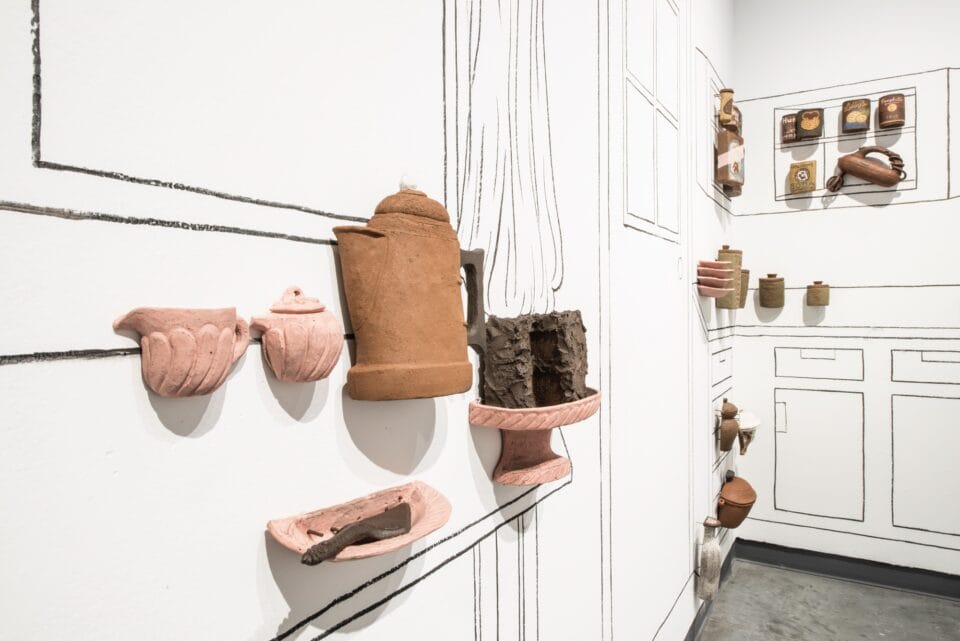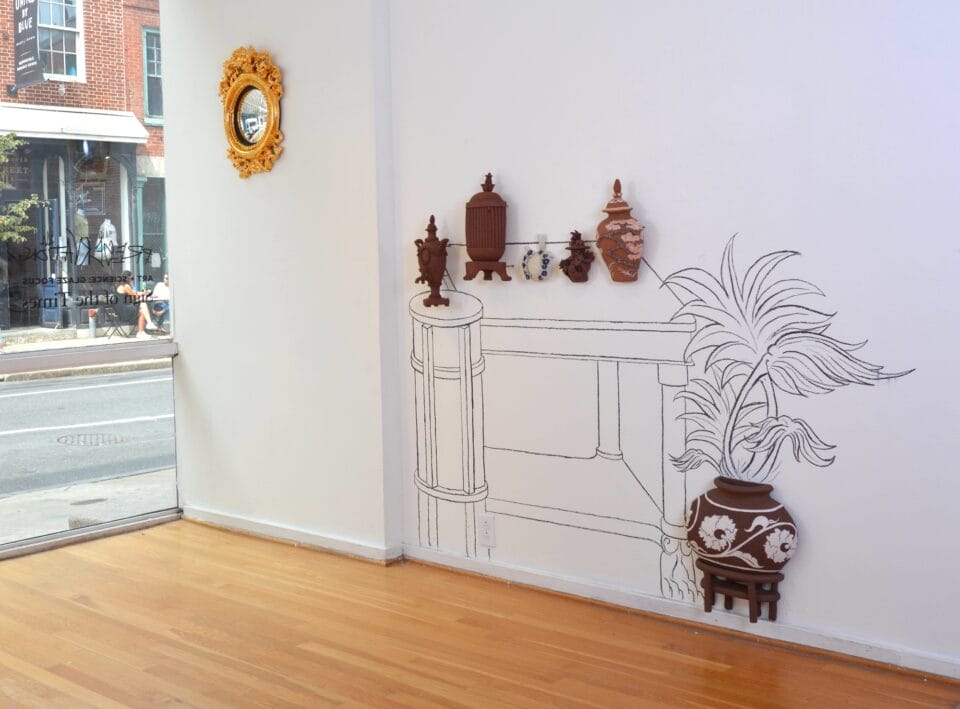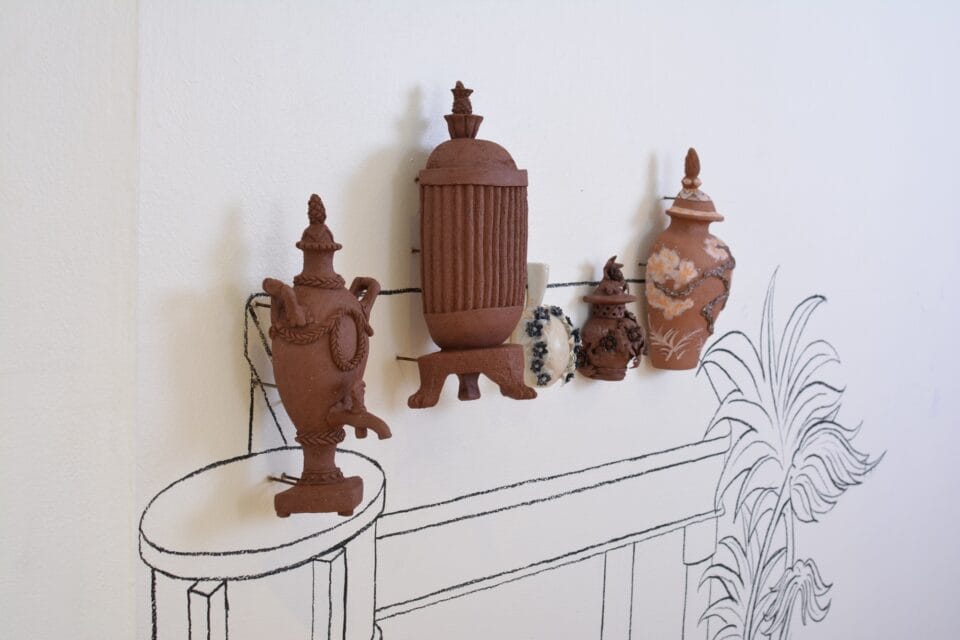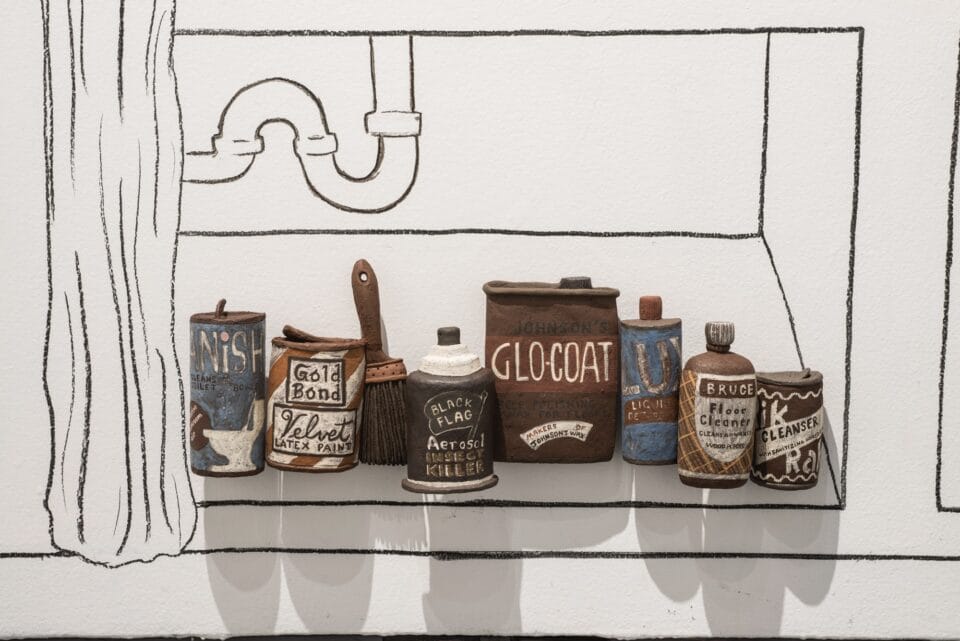
Foregrounding vibrant patterns, swathed in bright fabrics, and illuminated by the sun, the figures in Cameroonian artist Marc Padeu’s paintings are imbued with beguiling gravitas. His large-scale works stem from a fascination with the power of narrative, connecting the Western art historical canon—especially Renaissance titans like Caravaggio—with contemporary experiences of life in Cameroon.
Padeu was trained by the church as a fresco painter. He draws on dramatic biblical stories to juxtapose momentous religious and spiritual accounts with quotidian moments that emphasize Black joy, leisure, family, and fraternity.

Through the immediacy of acrylic, Padeu renders figures in everyday yet memorable scenes, whether gathered outdoors to relax, witnessing a baptism, or solemnly coexisting amid vivid surroundings.
Many of Padeu’s paintings take inspiration from Renaissance compositions, like “La réunion syndicale,” which bears hints of da Vinci’s “The Last Supper” (1495-1498) or Caravaggio’s “The Supper at Emmaus” (1601). Portrayed nearly life-size, the artist’s tableaux immerse us in rites of passage and moments of togetherness.
Find more on the artist’s Instagram.
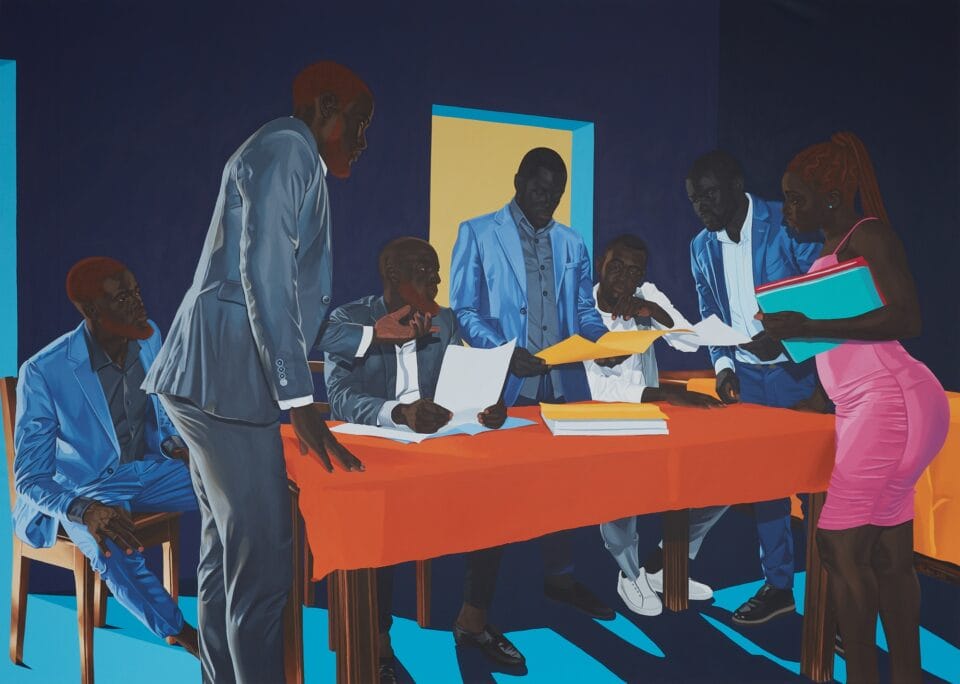
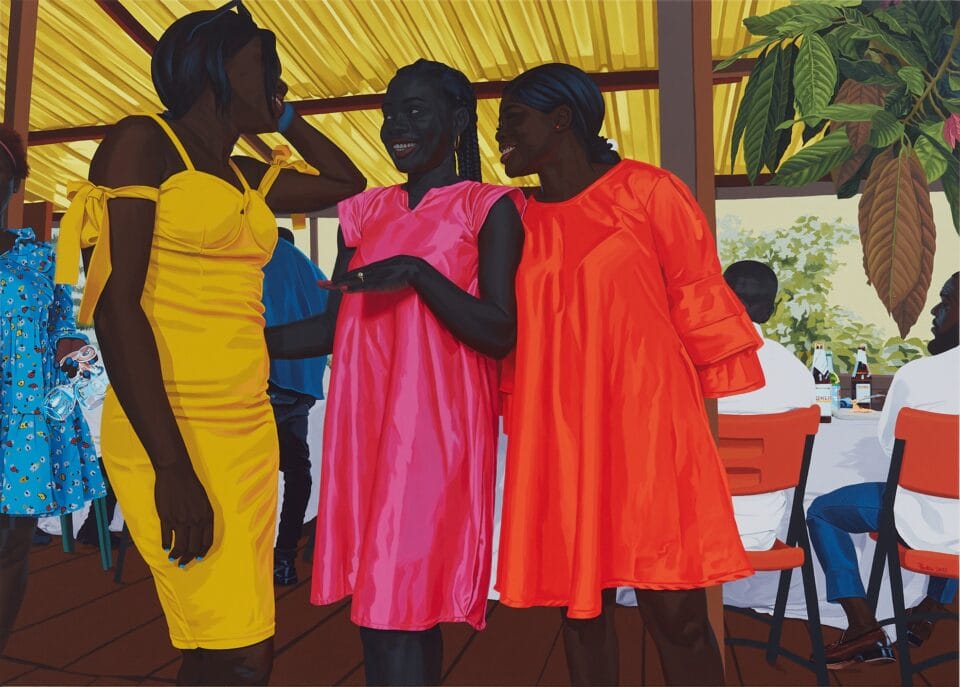
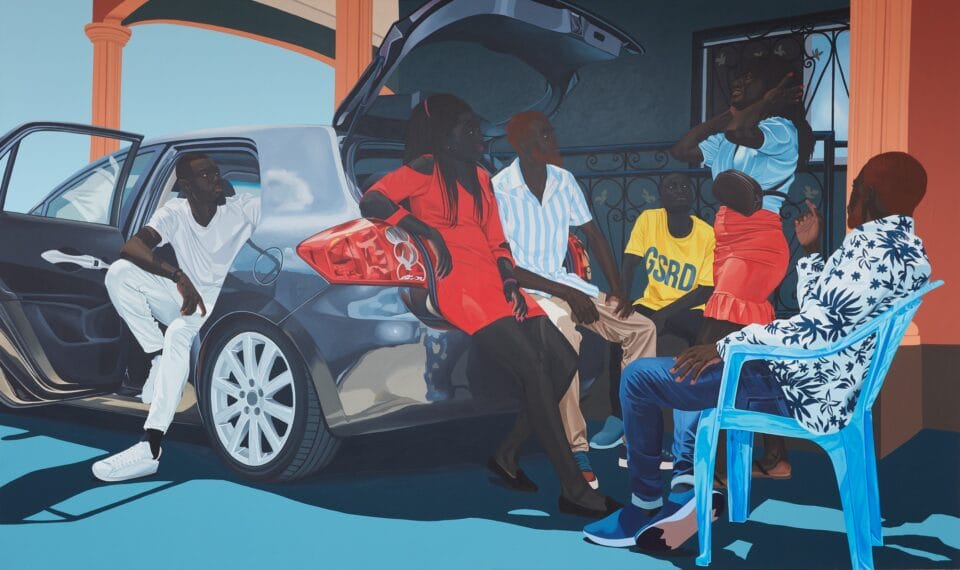
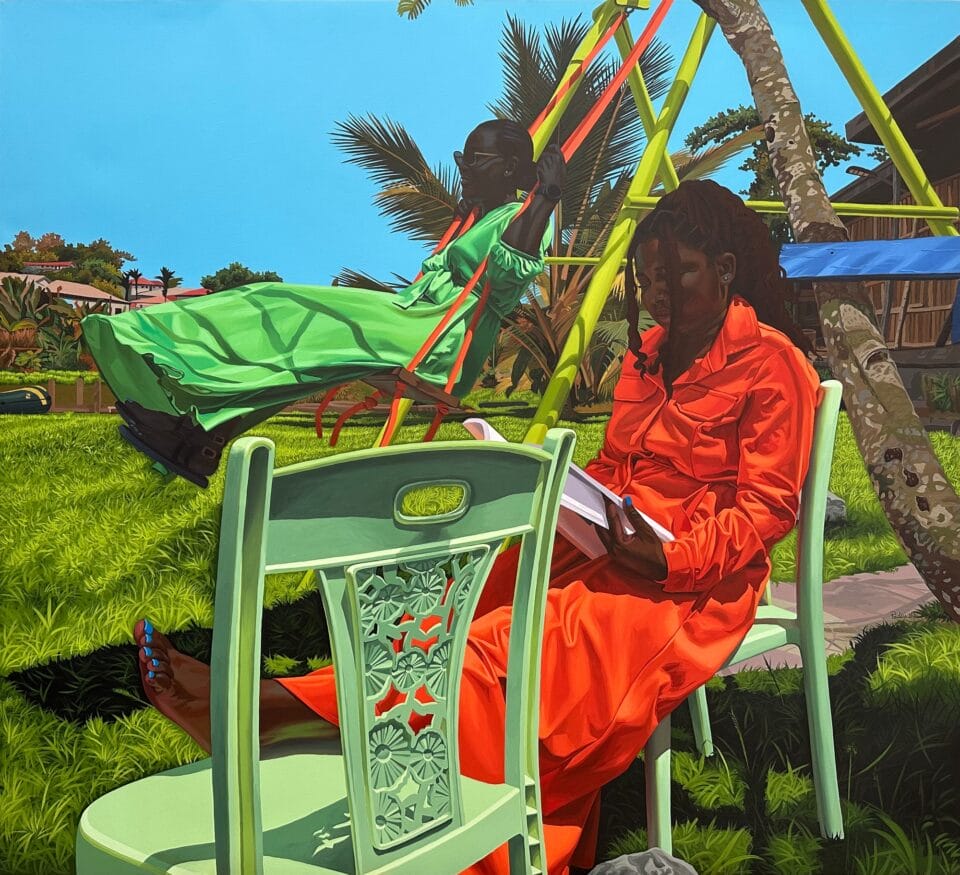
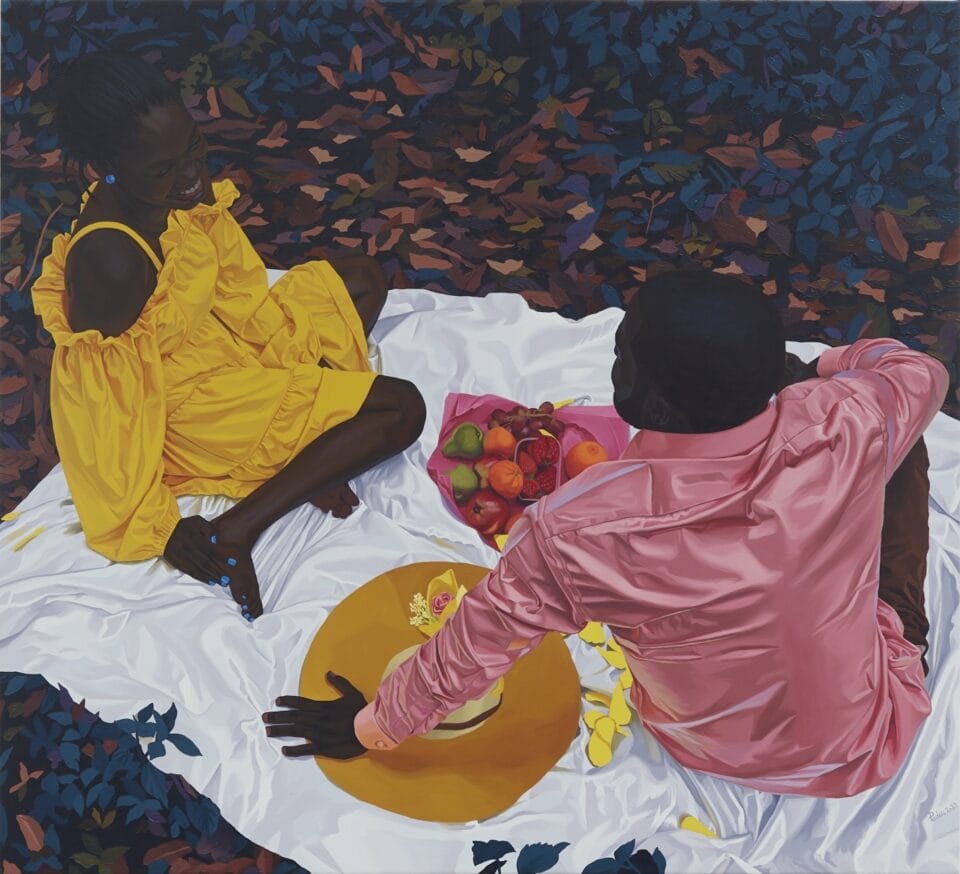
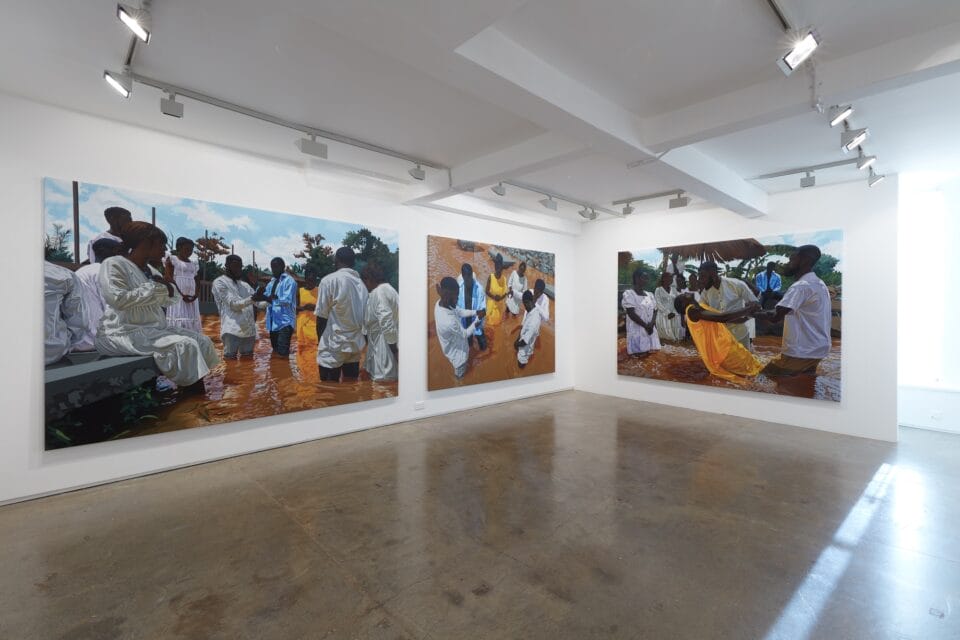
Do stories and artists like this matter to you? Become a Colossal Member today and support independent arts publishing for as little as $7 per month. The article Drawing on Religious Renaissance Art, Marc Padeu’s Paintings Monumentalize the Quotidian appeared first on Colossal.

















